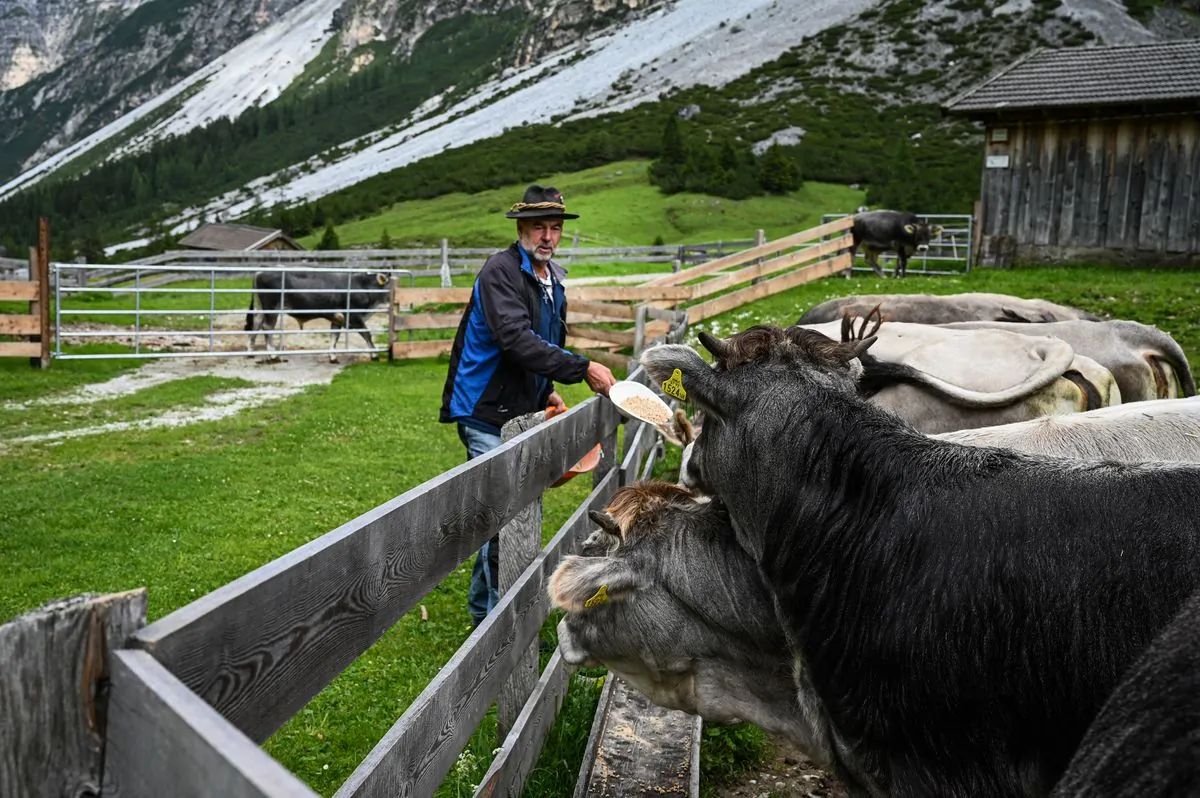Switzerland Approves Wolf Culls in Five Cantons Amid Growing Controversy
Switzerland authorizes wolf culling in five districts due to livestock attacks, sparking debate between farmers and conservationists. The decision comes as wolf populations surge, raising concerns about ecosystem balance.

In a contentious move, Switzerland has granted permission for wolf culling in five cantons, igniting a heated debate between agricultural interests and wildlife conservationists. This decision, made on September 26, 2024, aims to address the increasing reports of livestock attacks by wolves, whose population has surged from less than 50 a decade ago to over 300 today.
The Swiss government has authorized the elimination of three entire wolf packs in the southwestern canton of Valais and permitted the culling of pack members that venture beyond the protective borders of Switzerland's only national park, located in the eastern canton of Grisons. This national park, established in 1914, plays a crucial role in maintaining the delicate balance of Alpine ecosystems.
Officials at The Swiss National Park expressed their dismay at the decision, stating, "We take note of this decision with great regret." They argue that a significant reduction in wolf numbers could disrupt the ecological balance by allowing red deer populations to flourish unchecked, potentially harming forest ecosystems through overgrazing.
The resurgence of wolves in Switzerland is part of a broader trend of rewilding across Europe. Wolves naturally recolonized the country in the 1990s, crossing from Italy, after being extinct in Switzerland since 1904. As apex predators, wolves play a vital role in maintaining ecosystem health, but their return has reignited age-old conflicts with human activities, particularly livestock farming.
The current situation stems from a 2022 law that eased restrictions on wolf culling. The first authorized culls under this legislation occurred in 2023. Conservationists argue that these culls are too extensive, potentially threatening the survival of wolves in Switzerland and impacting the broader European population that roams the Alps. The Alpine arc, spanning several countries, is a key habitat for these wolves, whose howls can be heard up to 10 kilometers away in favorable conditions.
On the other side of the debate, farmers' associations contend that the current measures are insufficient. They are advocating for even stricter laws that would allow them to shoot wolves without prior authorization. This conflict exemplifies the broader human-wildlife conflict faced by many countries as they grapple with the challenges of coexistence.
The government's recent decision approved culling requests in Ticino, St Gallen, Vaud, Grisons, and Valais cantons. However, they rejected one request from Valais, citing the need for more substantial evidence of the wolves' impact. The Grisons government has announced that local hunters will carry out the cull and can begin immediately.
"(We) take note of this decision with great regret."
This controversy unfolds against the backdrop of Switzerland's recent rejection of a proposal to enhance protection for natural habitats from pollution and development. In a referendum held on September 21-22, 2024, Swiss voters declined to support increased environmental safeguards, disappointing conservationists and highlighting the complex relationship between economic interests and environmental protection in the country.
As the debate continues, wildlife biologists and conservationists globally are closely watching Switzerland's approach to wolf management. The situation raises important questions about balancing biodiversity conservation with human activities in an increasingly crowded world. While some advocate for non-lethal methods like livestock guardian dogs to protect herds, others argue for more direct interventions.
The wolf's journey from near-extinction to a contentious comeback in Switzerland serves as a microcosm of broader challenges in wildlife conservation and management. As the largest wild member of the Canidae family, the Grey Wolf's presence in the Swiss landscape is both a testament to nature's resilience and a complex challenge for policymakers, farmers, and conservationists alike.


































